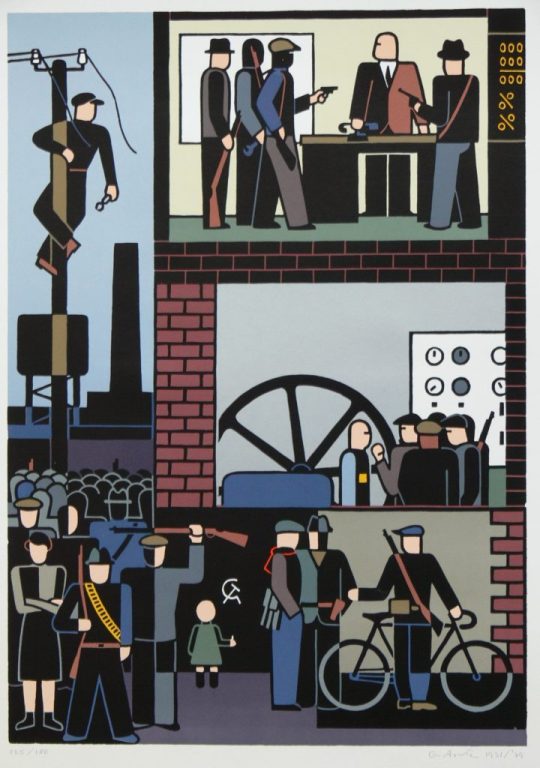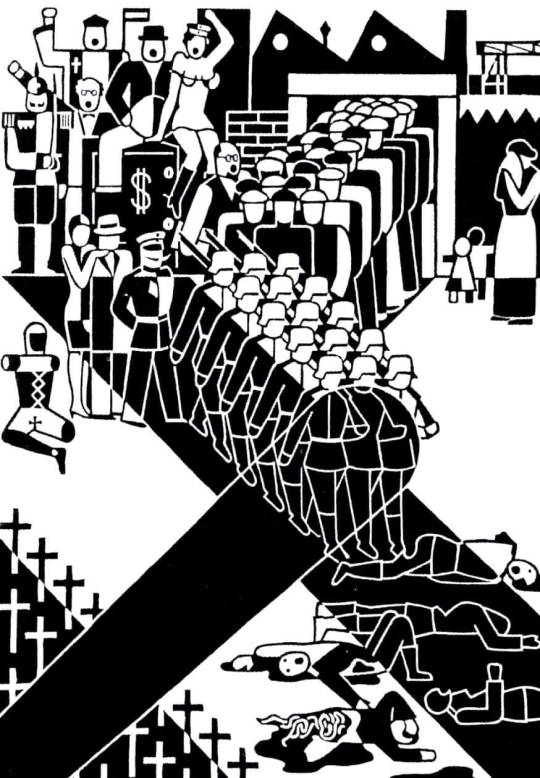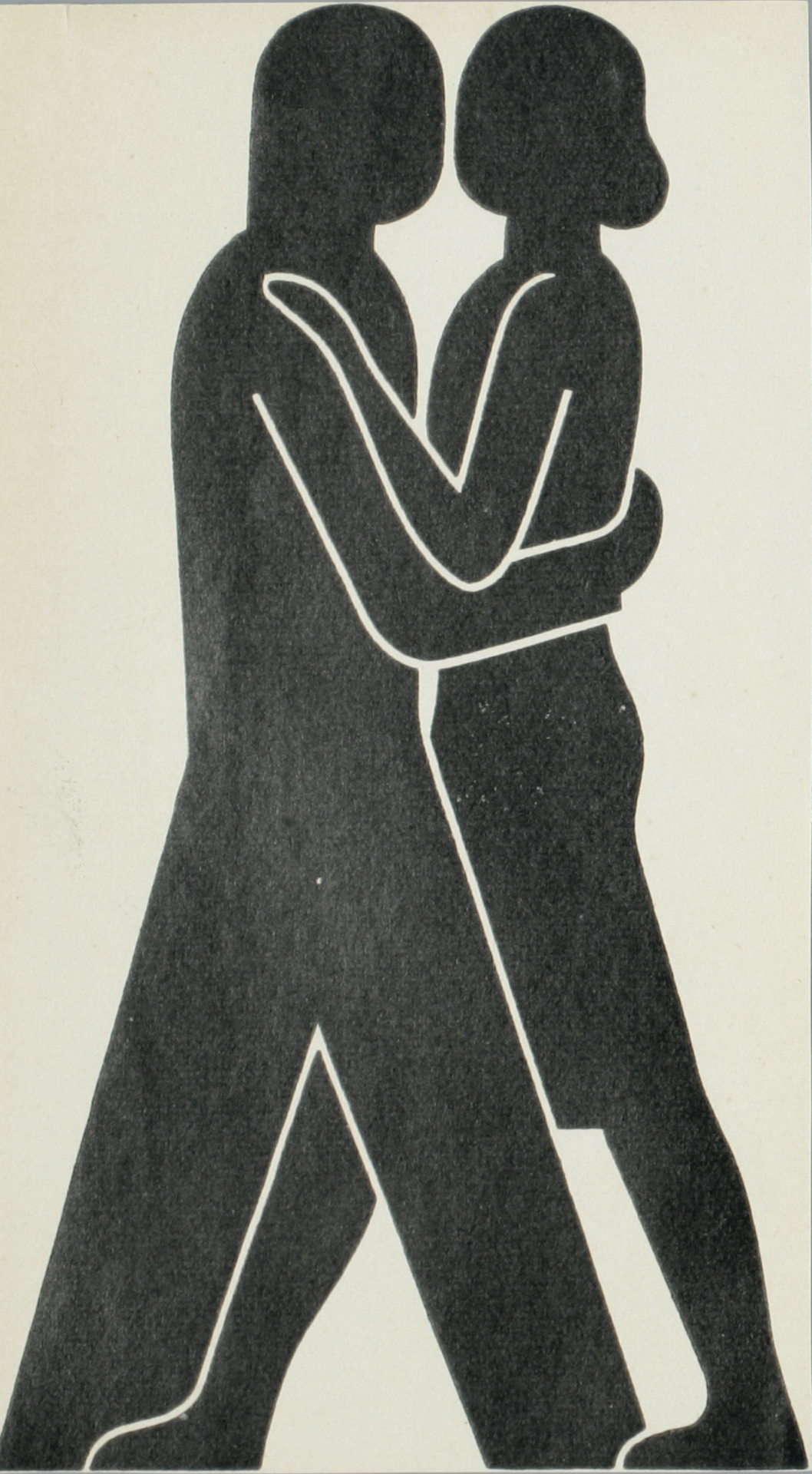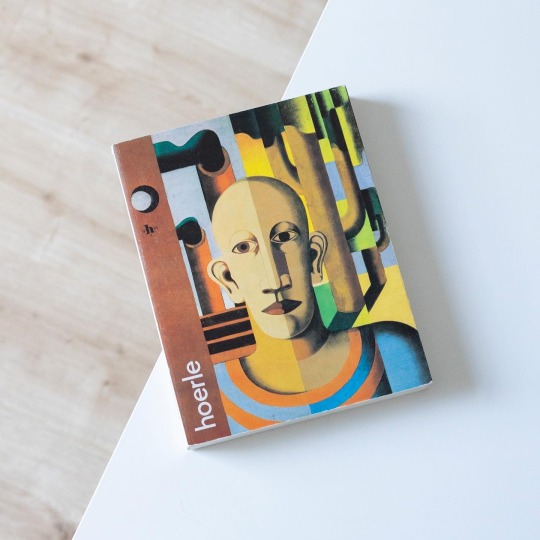#gerd arntz
Explore tagged Tumblr posts
Text

Factory Occupation by Gerd Arntz, 1931.
94 notes
·
View notes
Photo

Gerd Arntz @ expo Allemagne / Années 1920 / Nouvelle Objectivité au Centre Geroges Pompidou
9 notes
·
View notes
Text

Gerd Arntz, 1931: Fabrikbesetzung / Factory Occupation / Occupation d'usine / Okupación de la fábrica.
11 notes
·
View notes
Photo


Gerd Arntz (1929-1965) : A1415D01 (isotype 1415) + A1075D02 (isotype 1075), Beeldstatistiek Gerd Arntz, Gemeentemuseum Den Haag
3 notes
·
View notes
Text

Took me ages to recall the name "Gerd Arntz" when I was doing research on a project. I knew he was one of the most famous symbol designers of the 20th Century, yet a google search was absolutely no help at all, surprisingly. That tells me he is really forgotten outside of design academia. Thankfully I used the great AI research tool Perplexity.ai to help me find him. As soon as I described him and his work, it landed right on Gerd Arntz (and Otto Neurath who hired him). This image shows just the tip of the iceberg of his work. Apparently he created upwards of 4000 icons (or isotypes as they called them), as well as maps and infographics. You can learn more about him here
And amazingly, you can download a free, high-res PDF of his gorgeous, minimalist Atlas Gesellschaft und Wirtschaft (Atlas of Society and Economy) HERE. This is the project that Otto Neurath hired Arntz for originally, for his IsoType Institute. The (seemingly out of print, and therefore very expensive) book about his work, is featured HERE And a very good article HERE and HERE from Nightingale, the Journal of The Data Visualization Society.
0 notes
Text

ISOTYPE
[Arntz's] work was noticed by Otto Neurath, a social scientist and founder of the Museum of Society and Economy (Gesellschafts- und Wirtschaftsmuseum) in Vienna, Austria. Neurath had developed a method to communicate complex information on society, economy and politics in simple images. For his ‘Vienna method of visual statistics’, he needed a designer who could make elementary signs, pictograms that could summarize a subject at a glance. Arntz’s clear-cut style suited Neurath’s goals perfectly, and so he invited the young artists to come to Vienna in 1928, and work on further developing his method, later known as ISOTYPE, International System Of TYpographic Picture Education. During his career, Arntz designed around 4000 different pictograms and abstracted illustrations for this system.
-- Text and image taken from www.gerdarntz.org
{pictured: Strike, by Gerd Arntz}
1 note
·
View note
Photo
Pictograms of men for Otto Neurath's Isotope system, 1936

93 notes
·
View notes
Text

Gerd Arntz, Factory Occupation, 1931.
#anarchism#anarchy#self management#cooperation#socialism#mutual support#sabotage#working class#class struggle
419 notes
·
View notes
Text

Krieg
(War)
Gerd Arntz, 1931
(Woodcut)
8 notes
·
View notes
Text

Isotype 1061. Arntz Gerd.
The Memory
335 notes
·
View notes
Text

Recent discovery/theory me and a bunch of other jazzpunkers have been talking about.
Considering the little crab at the beach congratulates Polyblank on his birthday, and the dates on the guestbook, we thought it'd be silly if he WAS actually on vacation ON his birthday. Which we left somewhere along the lines of the 6th of May. Polyblank birthday yay! :^)
Something else we noticed was how some of the people in the book didn't add a date, but a symbol, such as the encrypted one (that I'll get into later), milktruck, Hunter S. Thompson and The Editor.

First of all, who are the people on the guestbook?
RAYMOND SCOTT -> In our world, Raymond Scott is considered a pioneer for electronica music! He was an American composer, band leader, pianist, record producer, and inventor of electronic instruments.
ENOCH LUSTIG -> Not a person from the 20th century I could find, though the name Enoch does appear in the Bible. Though I don't really think it's a biblical reference, the character of Enoch is known for living 365 years alongside God, and ascending to heaven in life.
GERD ALBERS -> Though somewhat hard to find information about him in English, Gerd Albers was a german architect and urbanist, prominent in the 20th century.
TILO LYMAN -> A possible reference to Theodore Lyman IV! He was an American physicist and spectroscopist known for important discoveries made regarding ultraviolet light, among others.
DAVID COCKERELL -> A direct reference to the real world person of the same name: David Cockerell! He is an electronics engineer and designer. Regarding this first bit, he's known to have designed countless synthesizer engines which were revolutionary for the electronica community!
JOSEF ARNTZ -> Found genuinely nothing about this guy. Mystery!
PROHÍAS -> A very exciting one!! Antonio Prohías was a Cuban-American cartoonist, known and recognized for many artworks! Among those, is Spy vs. Spy!
黒川 紀章 -> Kurokawa Kisho, or Kisho Kurokawa is a Japanese architect! Probably in here because he's the founder of the Metabolist movement! It was a radical Japanese avant-garde movement pursuing the merging and recycling of architecture styles within an Asian context. This is the Nakagin Capsule Tower (which Luis Hernandez loves so much) guy!
XAVIER ESPERANTO -> Probably a reference to Esperanto, the language! It is actually artificial, and it was devised in 1887 as an international medium of communication, based on roots from the chief European languages. Not too sure what the Xavier bit refers to.
JOHNY THE ROBOT -> The one under Xavier Esperanto's is Johny (with one N, yes) The Robot's! It's written down in the international telegraph alphabet, which you can see here. The complete message says "HELLO MY NAME IS JOHNY THE ROBOT". The telegraph was a huge thing in the 20th century. Meant to be short and meaningful, it started getting used during the war in the place of letters to communicate messages regarding enemy attacks and positions.
B. MARY -> Bloody Mary or, as you may know her, the Lady in Red! She confirms her name is indeed Mary in one of her unused voice lines, which you can find here.
MILKTRUCK -> Explanation not needed. Love you, milktruck.
HUNTER S. THOMPSON -> A direct reference to the real life Hunter S. Thompson! He was an important American journalist and author known for "Gonzo", a journalistic style in which the writer becomes a central figure and participant in the events of the narrative. In Jazzpunk, you can see him as the confused guy hanging around, lost at sea, asking Polyblank for a date at the bar, and being confused about Why Polyblank is in his room (when he breaks in with the master key).
THE EDITOR -> Needs no explanation.
NOW, A FUNNY LITTLE DETAIL:

THESE. As you can see, they all have something different in the 'DATE' section.
As for Xavier Esperanto's, I am not too sure.
Johny The Robot's is unintelligible.
milktruck's is an n/a. Does this mean the milktruck doesn't want to date. Not Applicable. milktruck doesn't date. We love aromantic rep.
Hunter S. Thompson is confused about being asked to date. If you can recall, from the times he's seen in game, he's always generally confused about everything.
Finally, The Editor has a money symbol. The Editor will go on a date for money. LOL! Fitting.
50 notes
·
View notes
Text


Together with Franz W. Seiwert and Gerd Arntz Heinrich Hoerle (1895-1936) formed the social activist core of the avant-garde group „Kölner Progressive“ that also included photographer Otto Sander and painter/sculptor Otto Freundlich. Hoerle, just like his friend Seiwert, regarded art as a means of agitating and informing the working class and raising attention for the social problems of Weimar Germany. Accordingly his works often depict workers and outcasts, crippled war veterans and robotic figures in a world dominated by labour and machines.
Although Hoerle initially started his career as an expressionist the majority of his oeuvre is characterized by a constructivist idiom that channeled influences by Giorgio de Chirico or Fernand Léger into a highly individual pictorial language in which form and content became one.
Already during his lifetime numerous museums acquired Hoerle’s works but his name never really gained the prominence it deserves. The underlying reasons are manifold: one surely is the radically of Hoerle’s topics and his decided discussion of the social question in interwar Germany. The other contributing factors likely are his untimely death at the age of only 40 as a result of a tuberculosis infection as well as the destruction of some of his works during the “degenerate art” initiative of the Nazis.
In 1981 the Kölnischer Kunstverein in 1981 organized a a comprehensive retrospective of Heinrich Hoerle’s multifaceted oeuvre which was accompanied by a concise catalogue compiled by Dirk Backes. The catalogue includes an informative biography of the artists that brings to life not only the turbulent times of the 1920s and the buzzing Cologne art scene but also his ironic and enthusiastic personality. The major part of the book is then dedicated to Hoerle’s artistic output that is neatly documented in Backes' detailed work catalogue. Until today the book remains the sole exhaustive examination of the work of a fascinating artist who still deserves much wider attention.
#heinrich hoerle#cologne progressives#avant-garde art#art book#exhibition catalogue#modern art#art history#book#vintage book#kölner progressive
30 notes
·
View notes









